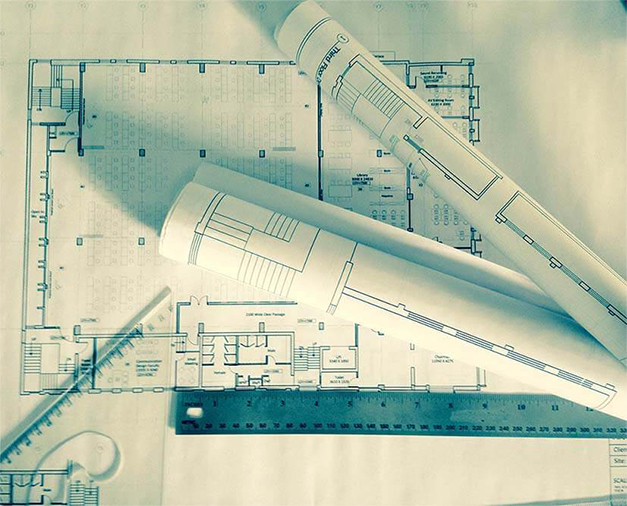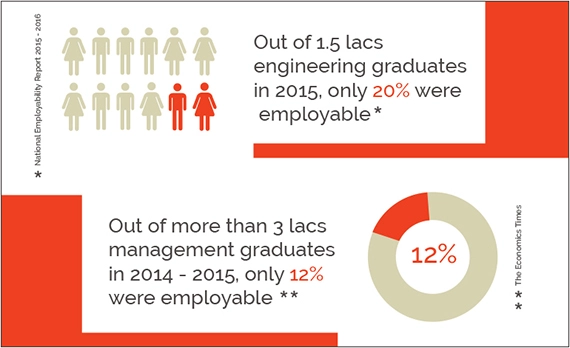Overview:
This blog discusses career choices one can get upon pursuing a Bachelor's degree in Interior design. It explains how this qualification opens doors to lucrative avenues across residential and commercial interior design, furniture design, set design, and freelance opportunities. It also highlights how students can choose to take up specializations of their choice and can start their own firms or work on one-off large-scale projects making this a highly rewarding career choice.
Table of contents
- Becoming an Interior Designer with a Bachelor’s in Interior Design Course
- 6 Promising Careers After Completing a Bachelor’s in Interior Design
- Create Your Path to Success by Choosing the Right Career
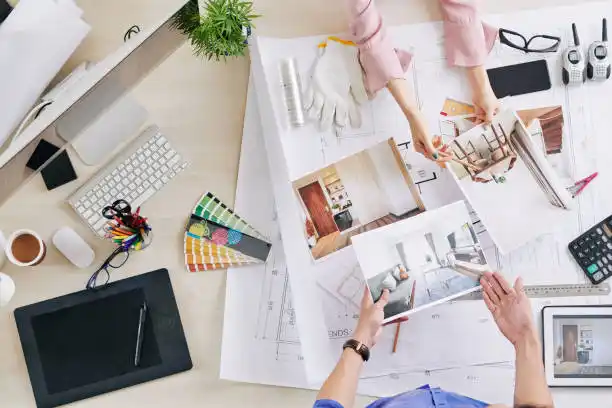
An interior design career is incredibly diverse, with a broad spectrum of roles that come with their own set of responsibilities and expertise. Each role plays a crucial part in designing functional, aesthetic, and comfortable spaces.
After completing bachelor’s in interior design, one is set to explore their creative potential, establish their design identity and unlock multiple career opportunities. With plenty of job roles in the market, choosing the right career can be one of the most confusing decisions.
In this article, we have handpicked some of the most relevant career options within the interior design industry. Additionally, the article lists down key responsibilities, required skills, and average incomes for each of them to help you make that decision.
Becoming an Interior Designer with a Bachelor’s in Interior Design Course
Got your Interior Design degree in the bag? Nice one! Now, here's a checklist to help you stride confidently towards a career in the interior design industry:
1. Gain practical experience:
Start with internships or entry-level positions at design firms focussed on interior design projects.
2. Build an effective portfolio:
Create an industry-relevant design portfolio showcasing your best projects. Your portfolio allows you to showcase your work and win opportunities with potential employers and clients.
3. Learn the process:
From pitching to clients, understanding client briefs to identifying an interior style, curating mood boards to successfully executing a project—its all a part of your process.
4. Networking:
Connect with professionals and experts in the interior design industry. It can open up opportunities and offer practical insights.
5. Stay updated on the industry trends:
Keep yourself updated on the latest design trends, material exploration and industry developments through events like FOAID , India Design ID , ACE exhibition, social media and other platforms.
Interior designers specialise in creating functional and aesthetic interior spaces by working closely with clients. They excel in client communication, conceptual planning, designing layouts, material selection, budget and project management.
Key Responsibilities of an Interior Designer
- Understanding client requirements and creating a design brief
- Planning space layout
- Identifying and finalising the interior style
- Conceptual planning and curating the mood board
- Finalising the design after multiple iterations
- Creating functional and comfortable spaces and executing the project
What Creative Skills Do You Learn When You Get a Degree in Interior Design?
- Intuitive and creative thinking
- Space planning
- Technically skills about design principles, materials, software, building codes, structural knowledge and lighting systems
- Understanding the client’s vision
- Project management
- Accurate observation
- Effective communication
- Problem-solving approach
6 Promising Careers After Completing a Bachelor’s in Interior Design
Ever felt a pang of frustration at a poorly designed space? Or maybe you've been inspired by a beautifully curated room? As an interior designer, you have the power to shape the way people feel and experience their environments. From cosy homes to bustling offices, your designs can make a real difference in people's lives. With a Bachelor in Interior Design, you have ‘n’ number of career paths open for you, few of which are listed below:
1. Residential Interior Designer
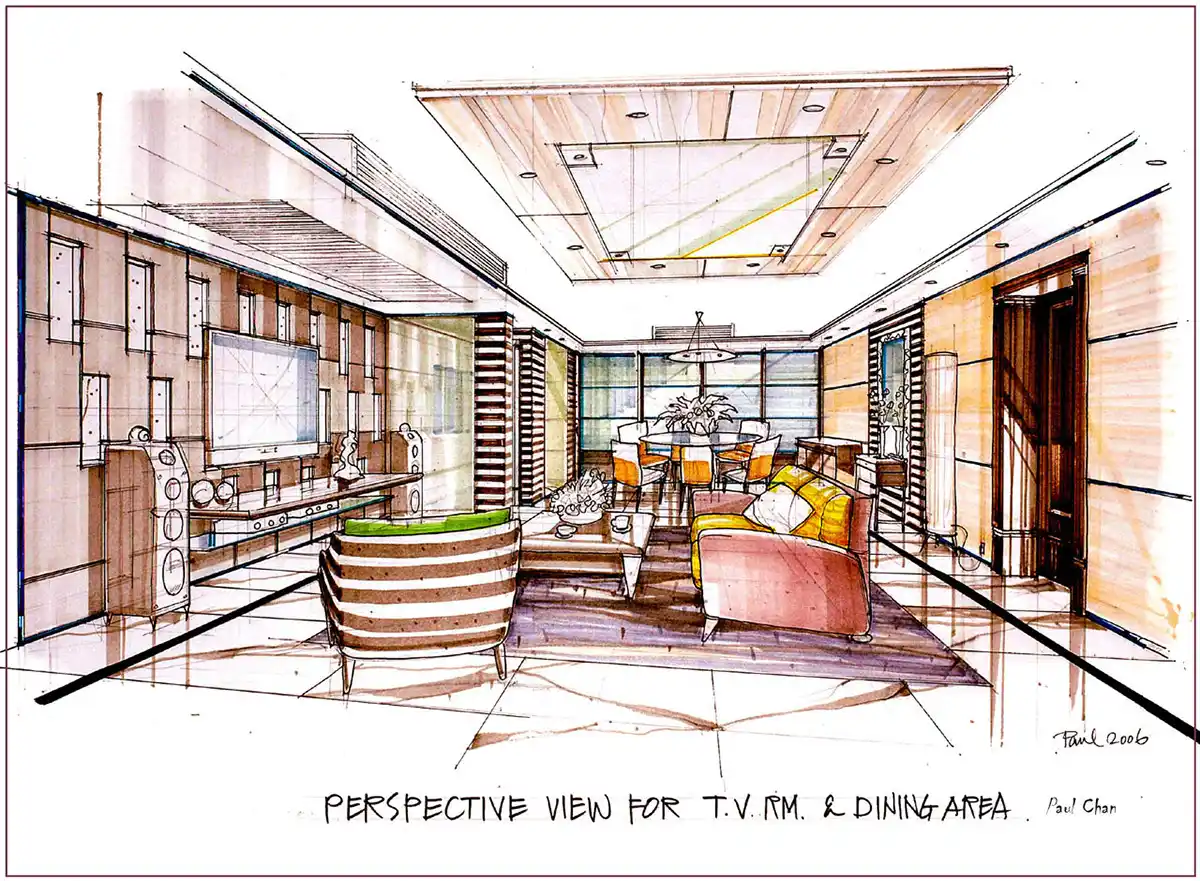
The role of a residential interior designer primarily involves working with homeowners to create functional and customised spaces. They focus on understanding the client’s requirements, style, and preferences and reflect their personality through the interior design of their homes that elevate their daily lives.
They plan the spatial layouts, finalise the aesthetics and provide recommendations on interior styles, colour schemes, furniture, and lighting.
Key Responsibilities of a Residential Interior Designer
- An in-depth understanding of client needs and preferences
- Discussing budget
- Identifying the style that suits the interiors
- Making iterations on the design brief
- Space planning
- Deciding on the colour scheme and material palette
- Planning furniture, decor, and furnishings
- Finalising and executing the design
Skills
- Creative thinking
- Solid understanding of space planning
- Knowledge of design principles
- Excellent communication skills
- A sharp eye for details
- Staying up-to-date with the latest trends and materials
Lucrative Career Paths after a Bachelor’s in Interior Design Course
Start a career that opens doors to various job opportunities, from working in an interior design or architectural firm to setting up your own design firm. The options are vast, ensuring a diverse and promising professional path.
What’s the Process of Working With Individual Homeowners?
Working directly with private homeowners demands a personalised approach characterised by trust-building, guidance and being a reliable advisor throughout the design process.
Individual homeowners are deeply attached to their homes and often have a fixed budget in mind, so naturally, the level of communication, decisions, and attention to detail needed is notably higher. Unlike working with contractors or builders, aspects that might be taken for granted need explicit clarification and understanding from the homeowner.
Working with individual homeowners typically involves the following steps:
1. Initial Contact -
Reach out to homeowners through word of mouth, referrals, marketing, or social media platforms.
2. Assessment -
Understand the homeowner’s requirements, budget and preferences.
3. Proposal and Agreement -
Create a detailed proposal, including services, timeline, and costs and sign a contract upon mutual agreement.
4. Design and Planning -
Work on the design, obtain the necessary permits and plan the project details.
5. Project Execution -
Start the renovation or construction process, keeping the homeowners informed and involved in every step.
6. Quality Control -
Ensure the quality of work is maintained and address any issues promptly.
7. Completion and Handover -
Complete the project, obtain final approvals and hand over the completed property to the homeowner.
8. Follow-up -
Provide post-completion support for a limited period and address any concerns the homeowners may have.
Throughout the process, communicate effectively and be transparent about all matters for a successful association.
Opportunities for Freelance or Self-Employment in Residential Interior Design
As a freelance residential interior designer, you can offer:
- Full-fledged design services
- Consultation services
- Virtual design and consultation services
- Design workshops
- Colour and furniture consultation
- Specialised niches such as sustainable design services
- Selling decor items, furniture, or customised design pieces
By combining your skills with entrepreneurship, you can carve out a niche in the residential interior design market and create a successful freelance career.
Average Income
The average income of residential interior designers in India is between INR 5,00,000 - INR 8,00,000 per annum.
2. Commercial Interior Designer
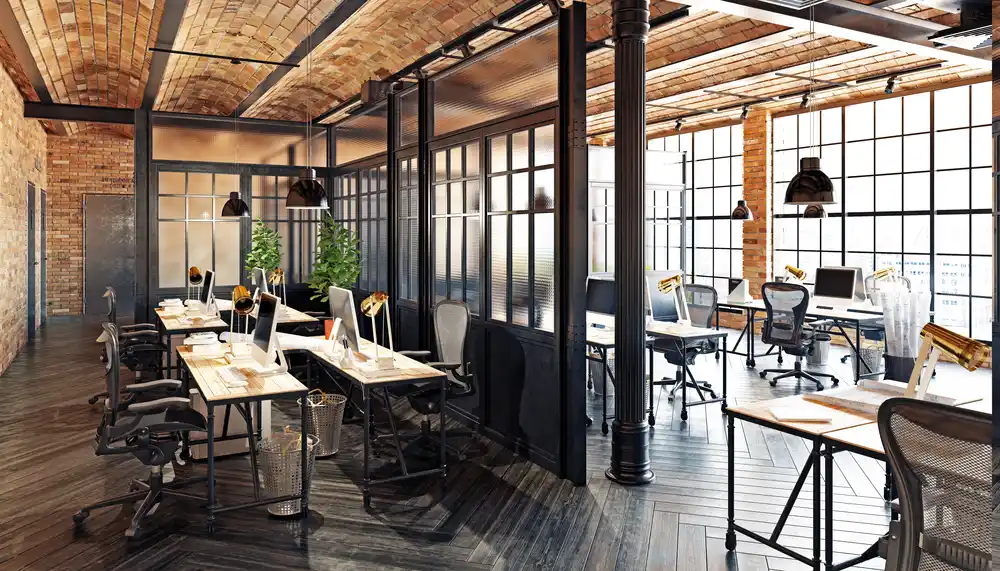
Commercial interior designers plan and design spaces according to a client's brand and business objectives. Their designs aim to enhance productivity, improve mental health through the aesthetics and spatial planning that improve work culture and customer experience. They work on layouts, furniture, lighting and colour schemes to improve employee well-being, productivity and customer experience.
Key Responsibilities of a Commercial Interior Designer
- Understanding how design can influence consumers
- Discussing the budget
- Developing designs that improve experience and workplace productivity
- Planning the layout
- Establishing the design style and developing the aesthetics
- Curating a mood board of colour scheme, material palette and furniture
- Knowledge of building codes and regulations
- Making iterations as per client feedback
- Executing the design
Skills
- Strategic thinking
- Looking beyond aesthetics
- Understanding how commercial spaces function
- The art of communication
- Developing innovative designs
- Focus on details
- Keeping up with the latest trends and materials
Lucrative Career Paths after a Bachelor’s in Interior Design Course
With experience, interior designers can advance into roles like project management and even launch their own design firm. An effective design portfolio and reputation can lead to exciting opportunities, such as working on prestigious projects, collaborating with renowned architects, or specialising in niche interior design industries.
What’s the process of creating functional and aesthetic spaces for organisations?
Commercial projects like public spaces, retail stores, entertainment hubs and offices need a thorough understanding of the client’s brand, operations and budget constraints. Communication, decision-making and alignment with business goals are essential to achieving successful outcomes based on customer satisfaction and user experience.
The process involves:
- Understanding client needs
- Developing design concepts
- Creating detailed plans
- Selecting materials and furnishings
- Collaborating with architects and contractors
- Overseeing implementation to ensure the outcome aligns with the organisational goals.
Opportunities in Commercial Interior Design
A commercial interior designer , can shape the functionality and aesthetics of various environments, including offices and retail spaces. The scope of work may involve spatial planning, furniture selection, lighting design and creating cohesive colour schemes for the space. You will focus on integrating brand identity and user experience, ensuring a harmonious and productive atmosphere in diverse commercial settings.
Average Income
The average income of commercial interior designers in India is between INR 5,00,000 - INR 10,00,000 per annum.
3. Kitchen and Bath Designer
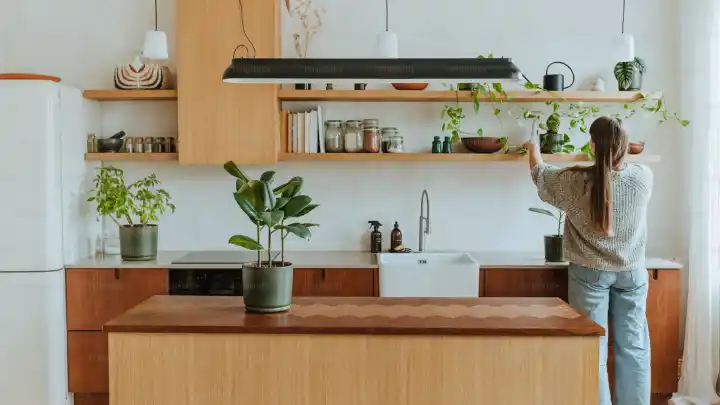
A designer specialising in kitchen and bath design focuses on maximising every inch by creating sufficient storage units and spaces to install appliances. They also ensure that the design aligns with the overall theme of the home or office and creates opportunities for improved lighting and accessibility.
Key Responsibilities for a Kitchen and Bath Designer
- Knowledge of kitchen and bath design
- Understanding client needs and preferences
- Developing aesthetic and practical designs
- Collaborating with contractors
- Working on colour schemes, materials and finishes
Skills
- Expertise in spatial planning
- Developing innovative and personalised designs
- Paying attention to details
- Updated about the latest and upcoming trends
Lucrative Career Paths after a Bachelor’s in Interior Design Course
Kitchen and bath designers create personalised spaces that reflect clients' personalities and cater to their needs. With experience, you can also get into luxury kitchen and bath design or other niche markets, leading to a variety of design projects.
What Are the Unique Considerations and Challenges?
- Creating optimised layouts for better and more convenient workflow
- Innovative ways to maximise storage without compromising aesthetics
- Selecting durable and water-resistant materials
- Suggesting appliances
- Improving ventilation and lighting conditions
- Plumbing and electrical considerations
- Coordination with other professionals
Opportunities in Kitchen and Bath Design
The future of kitchen and bath designers is promising, with opportunities in niche markets like sustainable design, smart technology integration , wellness-centric approaches, and a focus on creating safe, accessible and comfortable spaces.
Average Income
The average income of kitchen and bath designers in India is between INR 4,00,000 - INR 7,00,000 per annum.
4. Furniture Designer

A furniture designer can innovate, design, model and test pieces to ensure that they are not only stylish but also ergonomically sound, comfortable and durable. They transform raw materials into visually stunning and meticulously crafted furniture.
Key Responsibilities of a Furniture Designer
- Communicating design goals through conceptual designs
- Designing interior and exterior furniture
- Incorporating ergonomic principles
- Improvising existing designs and testing new ones through computer models and physical prototypes
- Selecting appropriate materials
- Discussing the budget for materials and construction
- Training artisans and manufacturers on specialised furniture designs and construction techniques
- Conducting market research and being aware of the latest design trends
Skills
- Knowledge of materials
- Spatial awareness
- Proficiency in sketching and 3D modelling software
- Problem-solving approach
- Effective communication
- Developing innovative designs
Lucrative Career Paths after a Bachelor’s in Interior Design Course
There is a growing demand for skilled furniture designers as consumers increasingly prioritise customised and unique furniture pieces. You can also explore niche markets like eco-friendly and sustainable options.
Collab with Furniture Manufacturer Partnerships or Independent Design Practice
Working with manufacturers as a furniture designer involves a collaborative process to bring your designs from concept to production. This process includes:
- Creating prototypes to check the feasibility of your designs
- Selecting materials considering cost, sustainability, durability and aesthetics
- Identifying the right manufacturers
- Negotiation and contracts
- Packaging and shipping
Working independently involves not only designing functional and aesthetic pieces but also managing the business aspects of your venture. As an independent furniture designer, you’ll wear many hats - designer, marketer, and business manager.
Opportunities in Furniture Design
Designers can collaborate with business owners on creating an accent chair for a living room or design a dining set that matches the appliances and cabinetry of a kitchen. They can also tie up with a large corporation and design a particular type of furniture for mass production or even pick niche markets like sustainable or luxury designs.
Average Income
The average income of furniture designers in India is between INR 5,00,000 - INR 10,00,000 per annum.
5. Exhibition Designer
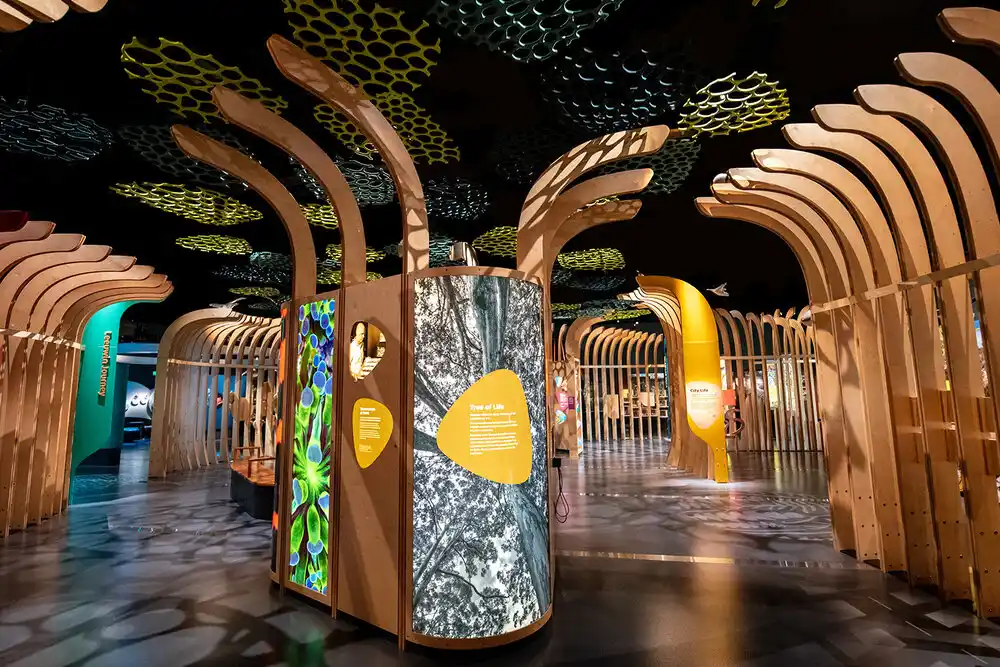
An exhibition designer, also known as a museum curator, possesses the ability to curate immersive experiences through art and installations. These experiences not only inspire and connect people from diverse cultural backgrounds but also educate people about the exquisite world of art and design.
Key Responsibilities of an Exhibition Designer
- Designing spaces that showcase artworks, installations and artefacts
- Planning the seating and circulation layout
- Lighting design
- Having good business acumen
- Collaborations and socialising
Skills
- Storytelling
- Organisational skills
- Coordination and collaboration
- Being able to educate and engage the audience
Lucrative Career Paths after a Bachelor’s in Interior Design Course
With experience, an exhibition designer may even move into leadership roles such as senior exhibition designer, design director, or leading the exhibition design teams. This involves overseeing multiple projects, managing teams, and contributing to the strategic direction of the design department.
Opportunities in Exhibition Design
Exhibition designers can go on to hold several exciting possibilities like working on large-scale projects: high-end exhibitions, international art events and trade shows. The future promises innovation and a continued focus on delivering meaningful and engaging audience experiences. As a museum curator, you can make museums interesting, helping people appreciate art and culture and creating unique experiences.
Average Income
The average income of exhibition designers in India is between INR 8,00,000 - INR 10,00,000 per annum.
6. Set Designer

Set designers create realistic environments for films, commercials, plays, music events, and other creative productions. They collaborate closely with directors, writers, and producers to create backdrops that provide comfort for actors to deliver their performances and ensure audience engagement.
Key Responsibilities of a Set Designer
- Understanding the script and ideating the way forward with the director
- Communicating ideas to costume, make-up, lighting and directing teams
- Sketching design ideas to guide the storyboard artist
- Suggesting design changes
- Creating effective designs within a budget
- Researching traditional, contemporary, and futuristic designs to produce a set that almost matches the specification
- Participating in meetings
Skills
- Creative vision
- Sketching and model making
- Understanding of composition, colours and stage design
- Knowledge of spatial design, interiors and architecture
- Being able to work with teams
- Excellent communication
- Ability to create sets of all scales
- Proficiency in design software
Lucrative Career Paths after a Bachelor’s in Interior Design Course
Set designers have a range of career opportunities across various industries, including film and television, theatre, commercials, corporate events and more. The versatility of the field allows them to explore diverse career paths based on their expertise and interest.
Opportunities in Set Design
With experience, a set designer’s role can expand beyond planning stage designs for theatres into various possibilities, like planning the backstage design and working on television commercials, live events, and films. Upon developing their skills, a seasoned set designer can work with larger production houses both in India and abroad.
Average Income
The average income of set designers in India is between INR 7,00,000 - INR 12,00,000 per annum.
Create Your Path to Success by Choosing the Right Career
If you’re intrigued by the aesthetics of spaces, have a passion for design and are drawn towards creatively solving problems, a career in interior design has a lot to offer. Pick a career that resonates the most with your aspirations and goals, and be assured of being rewarded with good salaries and great experiences.
Enrol in the field of interior design, explore possibilities and discover which interior design career path is the right one for you.
Check Out What’s Next In Interior Design
Want to read more? Author Sukanya Bhattacharjee has also written in-depth about importance of ergonomics in interior design and impact of interior architecture & design on urban spaces, 101 Know How of Sustainable Interior Design.
To get more guidance on Career Opportunities in Interior Architecture & Design , watch this webinar. Check out the Interior Architecture & Design programme at IIAD in this quick video to get a glimpse of what it's all about!


